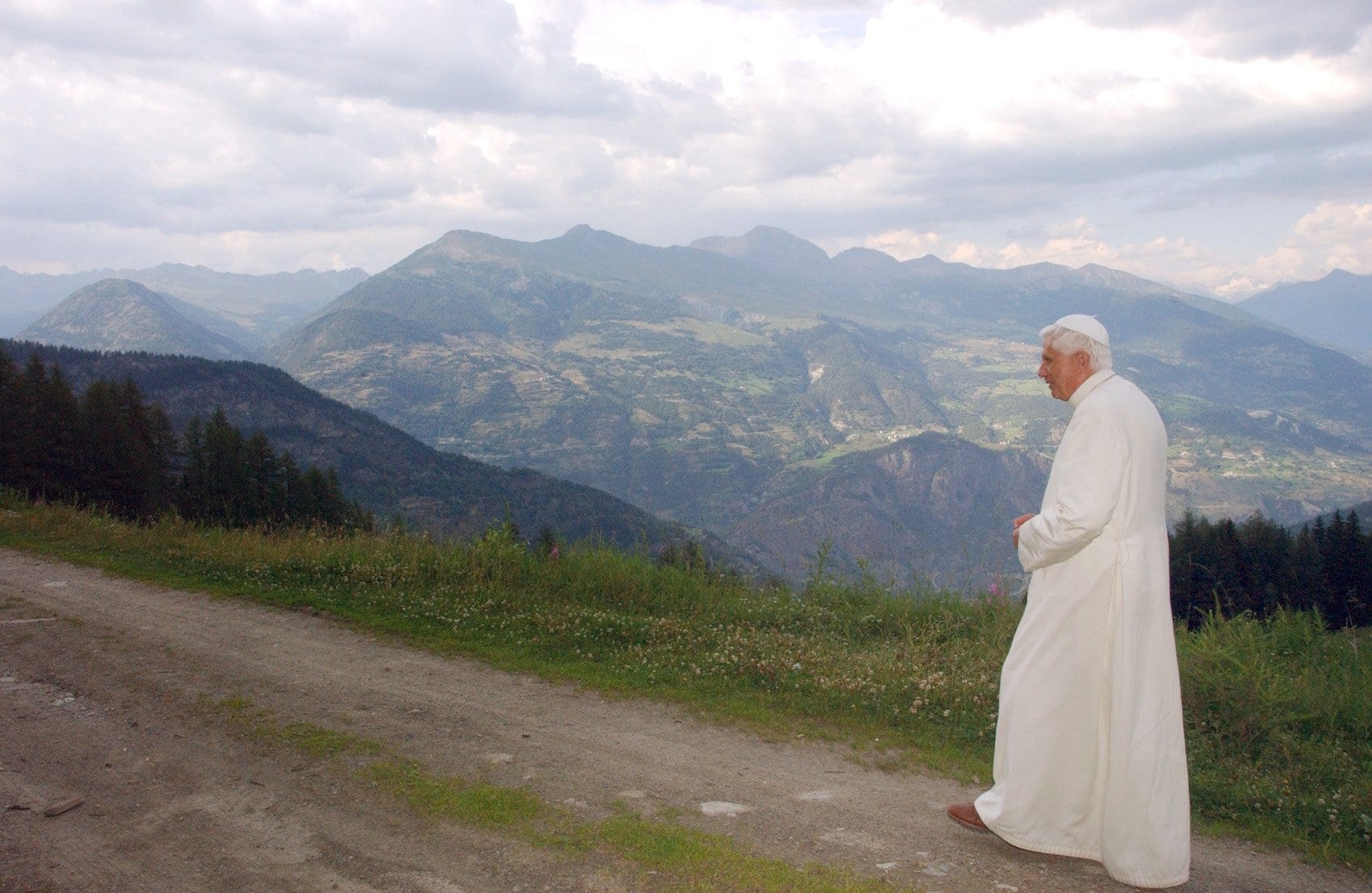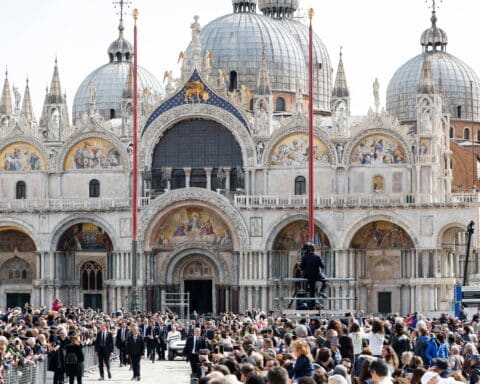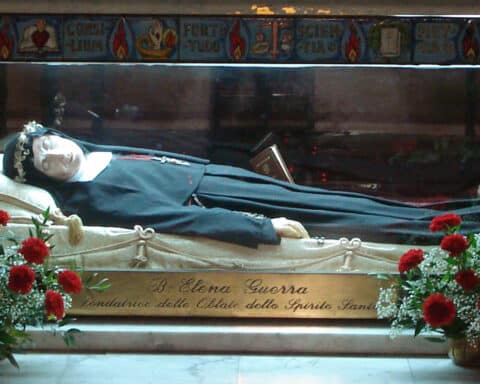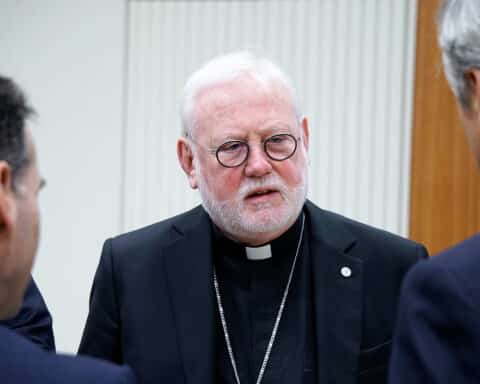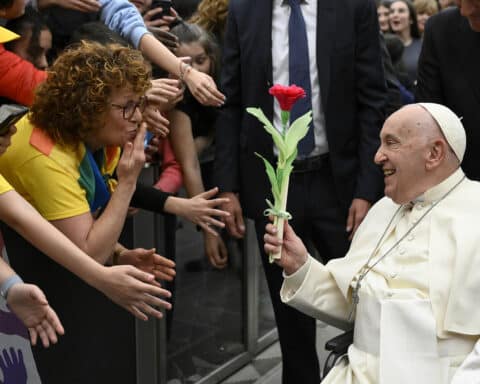ROME (OSV News) — On Dec. 31, 2022, the Catholic world stopped as Pope Benedict XVI passed away on the last day of the year, leaving behind an enormous theological legacy. But it’s the everyday collaborators OSV News asked to share memories of the late pontiff, remembering a man full of charm, kindness and humor.
“Every morning at 6 a.m., he stood in the window of his bedroom in the Apostolic Palace and looked over the city, and I stood in the kitchen of my flat in front of the palace and waved to him. One day he noticed me and from then on he always raised his hand and waved back,” Demetrio Fortunati told OSV News.
Fortunati worked in the Vatican printing house for 42 years. He met Cardinal Joseph Ratzinger at the very beginning of the future pope’s Roman days — in 1982, the year Cardinal Ratzinger became prefect of the Congregation (now Dicastery) for the Doctrine of the Faith. Fortunati’s task was to bring the freshly printed newspaper L’Osservatore Romano to the prefect and later Pope Benedict. “Quite often I met him on Saturday afternoons when he went for his cardiological check-up at the Vatican clinic,” he said.
That is where Dr. Patrizio Polisca took care of Pope Benedict.
The pope’s doctor
Polisca was the assistant of the legendary doctor of St. John Paul II, Renato Buzzonetti, from the early 1990s. Until Polisca’s life changed completely on April 19, 2005, when John Paul’s successor was elected.
“The new pope, Benedict XVI, approached me as he was leaving the Sistine Chapel and asked me if I would agree to become his personal doctor. I started that day and continued until his death,” Polisca told OSV News.
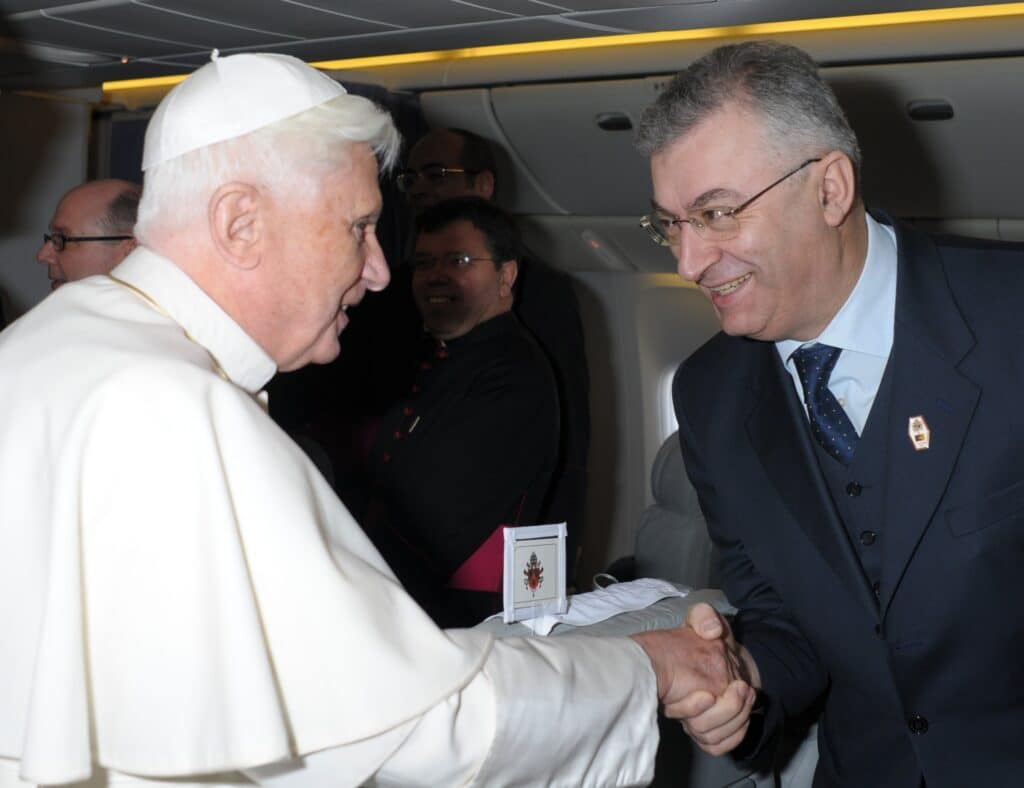
Cardinal Ratzinger had a truly Germanic sense of self-discipline — his days were perfectly organized, people close to him said. He divided his workdays between office work, meetings and prayer time, but also did not forget about taking care of his physical condition.
Every day he would take a walk in the Vatican gardens. “Even when he had a cold, he never gave up, walking outside and praying the rosary belonged to his routine,” Polisca said.
Witnesses to Benedict XVI’s friendship with John Paul II
Luciano Firmani, saw Cardinal Ratzinger regularly during his service in the Apostolic Palace. Firmani was a lift operator, going up and down daily with St. John Paul and later Pope Benedict.
“Every day at 4 p.m. he passed through the Courtyard of St. Damasus, where I was on duty at the elevator. After about an hour, he returned the same way, always greeting me kindly,” he said of the then-CDF prefect.
“Every Friday at 6 p.m., as prefect of the Doctrine of the Faith, he went to Pope John Paul to discuss different issues, always dressed in a simple cassock and a black beret on his head. After the audience, he used to tell me in the elevator with a smile: ‘I got away with it again this time.'”
The cordiality and kindness between St. John Paul and Cardinal Ratzinger went far beyond official duties. When John Paul was dying April 2, 2005, the Vatican doctor witnessed their friendship.
“I was in the papal apartment,” Polisca said. “I remember how Cardinal Ratzinger knelt down next to the dying John Paul II and thanked him for everything he had done for the church. Even if he was at the end of his life — the pope was aware of who was by his side. I couldn’t hold back my tears,” Polisca recalled.
Pope Benedict’s one request: Move his library
Cardinal Ratzinger did not want to take St. John Paul’s place. After 23 years of his job in the Vatican he wanted to retreat into silence and immerse himself in the books. Ultimately, he accepted the choice of the conclave April 19, 2005.
“I had known him for over 20 years, and yet that meeting when I saw him leaving the Sistine Chapel in the white cassock made a great impression on me. I remember his eyes … blue, sparkling, as if a new spirit had entered him,” recalled engineer Paolo Sagretti.
As head of the Vatican’s Floreria –the warehouse in charge of furnishing Vatican offices and apartments starting with the pope’s lodgings — Sagretti was responsible for the preparation of the papal apartment for the successor of the Polish pope.
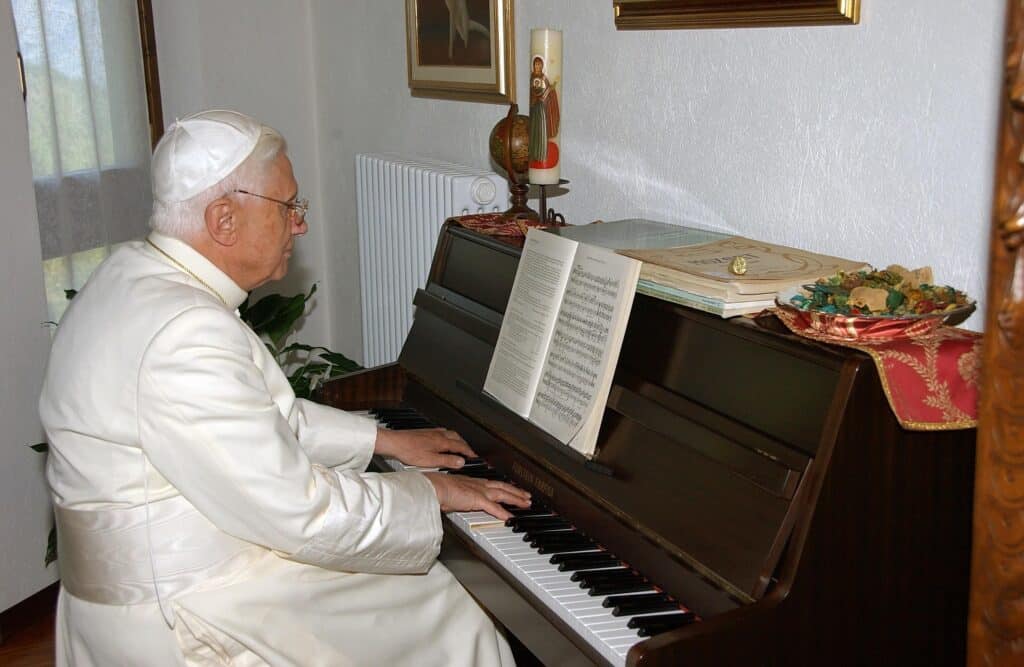
Pope Benedict had no special requests regarding the arrangement of his new space in the Apostolic Palace. Except for one place.
“We were supposed to move the entire library from the old flat to the papal apartment,” recalled Sagretti. “Pope Benedict knew perfectly where the place of each volume was. While preparing speeches, he blindly reached for the appropriate book,” he said.
“So we took pictures of all the shelves in his old apartment and then installed all the books … thousands of books were placed in the papal apartment exactly the same way they had been arranged before.”
For people working in a small world behind the Vatican walls, the choice of Cardinal Ratzinger was a natural one after the long pontificate of his predecessor.
Pope Benedict’s surprise resignation
Domenico Giani, who soon after the election of Cardinal Ratzinger became the head of the Vatican Gendarmerie, said that even though they very closely collaborated, he had “no idea” about the pope’s decision to resign until the last moment.
“I noticed that he was getting more and more tired, especially after the trip to Mexico (in 2012), where he fell and came back physically exhausted. He was worried about what future trips would be like in this condition. But still, I had no idea about anything. I did not know that the renovation works carried out in the Mater Ecclesiae monastery in the Vatican were related to the person of the pope,” he said of the future home of retired Pope Benedict.
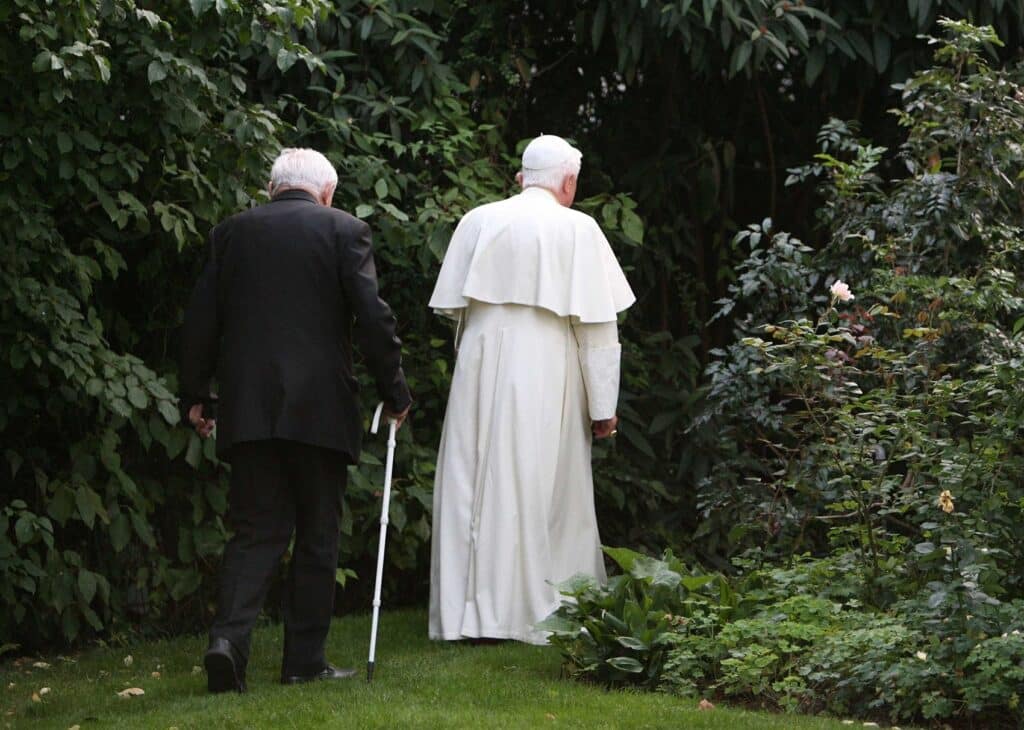
Pope Benedict’s resignation sent shockwaves across the world when he announced it Feb. 11, 2013.
“But he was absolutely at peace with this decision,” his personal doctor said.
Remembering the resignation day
“On February 28” — the day his resignation took effect and Pope Benedict left the Vatican — “I was sitting next to him in the helicopter, he was looking out of the window. We saw people from above waving to him, we heard the bells of the Roman churches … we were all crying, and he was incredibly strong and calm,” recalled Polisca, who accompanied the pope to Castel Gandolfo.
The summer residence of the popes, turned into a museum by Pope Francis, had always been a perfect getaway for Pope Benedict. Saverio Petrillo was a director of the pontifical villas in Castel Gandolfo. “The climate of this place was in harmony with his soul; he said once: ‘I can see the mountains, the lake and the sea from here. A beautiful church … and good-hearted people,'” Petrillo said, recalling the late pope’s words.
“At 9 p.m. piano music could be heard around the area, as the pope and his brother, Father Georg, played four hands on the piano. It was an unforgettable time,” Petrillo recalled.
“As the director of the papal residence, I was supposed to give the order to the Swiss guards to close the entrance of the palace exactly at 8 p.m.,” Petrillo said. Remembering the day Pope Benedict finished his eight-year pontificate, he said, “The guard closed the palace’s doors, then turned to me and threw his arms around my neck. We all cried. As if the world was coming to an end.”

